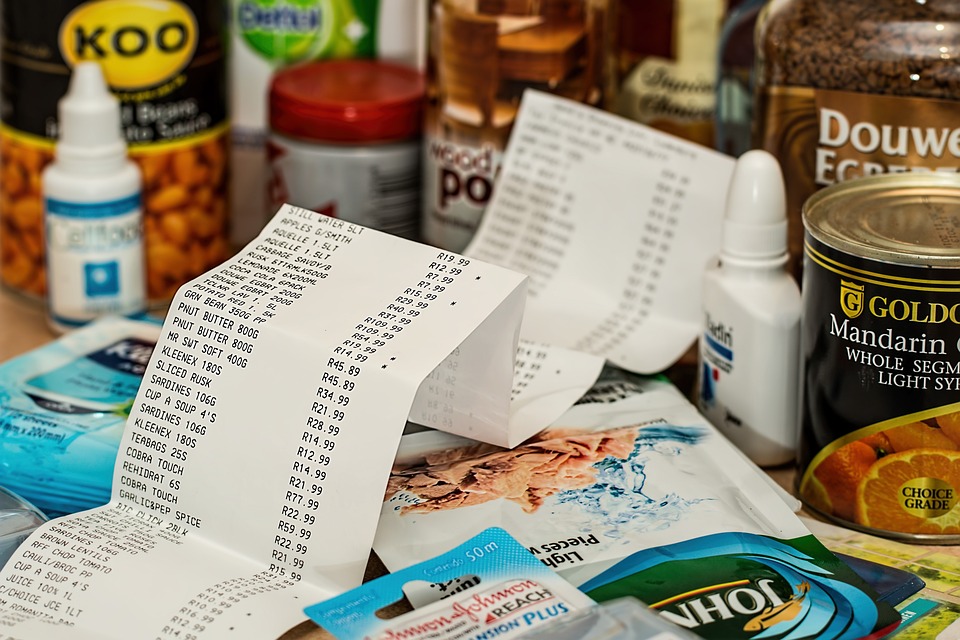Unfortunately, those with lower incomes in the United States are more likely to suffer from obesity, along with its associated health problems like diabetes and heart disease. Studies on healthy eating have demonstrated that making dietary changes is one of the most effective ways to improve overall health, yet it can be challenging to maintain a nutritious diet if you don’t have the appropriate resources. Here are 14 suggestions on how to begin consuming nutritious food while being mindful of your budget.
1. Stick to staples when eating healthy on a budget.
When you’re filling your cupboard with nourishing items, begin with basics like rice and pulses (black beans, kidney beans, lentils, etc.). These dishes can be used as the foundation for numerous meals simply by adjusting the seasonings and incorporating various vegetables.
2. Buy in bulk.
Grocery stores are beginning to have a section where you can buy food in bulk. This spot is ideal for finding bargains on essential items like rice and flour, and it is also possible to get small amounts of spices here. It doesn’t make financial sense to buy a whole bottle of a spice if you only require a tiny amount. The rest of the bottle will just sit in your cupboard.
3. Save your vegetable scraps.
Homemade stock is just like rice and beans – it forms the basis for soups and stews. Veggie stock also adds flavor to simple rice dishes. Whenever you cut celery, onions, carrots, or any type of leafy vegetable, put the trimmings in a plastic bag and store in the freezer. Once the bag is filled, employ the vegetable trimmings to create a stock.
4. Practice seasonal meal planning.
Acquiring a food plan is advantageous, yet purchasing produce that is not in season can cause your grocery costs to skyrocket. Getting nutritious food without breaking the bank means concentrating on what is fresh and available during the current season.
5. Buy seasonal produce in bulk and freeze it.
If you have room in your freezer, purchase additional fruits and vegetables and store them in the freezer. Making the most of the plentiful supply of corn, tomatoes, and green beans in the summertime. This food can be preserved by either freezing or canning it so that it can remain fresh and healthy all year.
6. Don’t throw anything out.
Roughly 40% of food in the United States is discarded each year. This is dollars in the trashcan. Preparing nutritious meals while spending less money involves making the most of food that could otherwise go to waste. Old bananas? Peel and freeze for bread or smoothies. Chicken bones? Make chicken stock. That last little bit of tomato sauce? Place in an ice cube mold and use in soups or condiments.
7. Stay plant-based.
Eating a diet that consists of only plants is usually less expensive than one that includes any type of meat. There is an abundance of scrumptious vegetarian options that go beyond just the usual pasta meals. Even if you only limit your meat consumption to weekdays, or just reserve it for Mondays, it can help you and your household save a considerable amount of money.
8. Re-think protein.
Animal protein can be a large outlay in a budget, but there are ways to lessen the expense and still consume meat. Opt for organic products, but wait until they are discounted before you buy in bulk. Pick a cheaper kind of meat and prepare it by braising, roasting, or stewing to create a better taste and make it more tender. Chicken thighs are a great deal when compared to boneless, skinless chicken breasts, and they are much more flavorful too! Additionally, there are many beef options that are much lower in cost.
9. Control portion size.
A portion of meat is roughly equivalent to the size of a set of playing cards, however this would not be apparent if you were to observe it in a restaurant or magazine. Animal protein should take up the least amount of space on your plate. Concentrate the remainder of the meal on vegetables and whole grains.
10. Buy organic selectively.
Though there is an ongoing discussion about whether or not organic fruits and vegetables are superior to those grown in traditional ways, one thing is certain: organic produce does not introduce any chemicals into your system. Nevertheless, some fruits and veggies do not take in the toxins, so there is no need to buy organic all the time. Refer to the “dirty dozen” and “clean 15” lists when making decisions.
11. Prep ahead of time.
A large portion of the food thrown away in America is due to people’s good intentions. We stock up on fruits and vegetables, but then forget about them as our week progresses and becomes more and more hectic. When you buy fruits and vegetables, wash them, cut them up, and separate them into individual portions when you get home. If you make it simpler to grab a salad or some berries, you’ll be more likely to do so!
12. Cook from different cuisines.
Cuisines from Mexico, China, and India all utilize intense flavors with basic components. A simple online search can yield delicious recipes. You may need to buy some special seasonings for certain recipes; try getting a small quantity from the bulk area when you first try out the recipe.
13. Shop at ethnic markets.
That $4 soy sauce at the grocery store? In the ethnic market down the street, it’s $1.50. The same deep price cuts can be seen on items such as noodles, rice, and dried pulses. Invest some energy into familiarizing yourself with your local ethnic market for the greatest bargains available.
14. Make healthy, affordable swaps.
It is possible to consume nutritious foods while sticking to a budget. These days, it is easy to come across inexpensive meals due to the abundance of fast food restaurants and convenience stores. If you desire to consume nutritious food at a low cost, it can be difficult. Here are some substitutions with food that can assist you in staying within your food budget while adding nutritious items.
Instead of: Iceberg lettuce
For a small price of less than a dollar during the right time of year, iceberg lettuce is an economical choice that will make you feel full. Consuming a dish of iceberg lettuce is essentially the same as drinking a glass of water. Lettuce that is labeled as iceberg is composed of mostly water, with a small amount of fiber and trace amounts of nutrients.
Try: Fresh spinach or other greens in season.
The most affordable and healthiest way to eat is to purchase vegetables in their natural growing season. The health benefits of dark leafy greens are unbeatable. Consider these numbers:
- Kale: Contains vitamins A, C, K, plus calcium, folate, and potassium. Kale fights inflammation in the body and is thus a great choice for chronic pain.
- Spinach: Has fewer than 20 calories per cup with all of the same benefits of kale, plus the added benefit of being just as nutritious in its frozen state (so available cheaply year ‘round!).
What Is a Healthy Diet?
It is not necessary to cut out all the foods you enjoy in order to maintain a nutritious diet, nor is it necessary to stay incredibly thin or deny yourself any pleasure. It’s about having a feeling of euphoria, having more vigor, enhancing your well-being, and elevating your spirits.
Healthy eating doesn’t have to be overly complicated. It’s not just you if you’re feeling confused due to all the differing nutritional and dietary guidelines that are floating around. It appears that there is no consensus among experts as to which foods are beneficial to one’s health, as one expert may tout a certain food as beneficial while another may argue the exact opposite. It is important to have an overall healthy diet rather than focusing on particular foods or nutrients to improve your mood. While certain foods have been demonstrated to have positive results, it is the general eating pattern that is most vital. Whenever it is possible, one should substitute processed food with natural food as the foundation of a nutritious diet. Consuming food that is as natural as possible can have a major effect on your mental and physical state.
By applying these straightforward techniques, you can figure out how to construct and stick to an appetizing, assorted, and healthy diet that is beneficial to your emotional and physical wellbeing.
Making the Switch to a Healthy Diet
It doesn’t have to be an either/or choice to start eating better. It is not necessary to be flawless, you don’t have to cut out all of your beloved foods, and it’s not necessary to make sweeping changes right away–this usually just winds up with people breaking their diet or abandoning it altogether.
A more effective way to proceed is to implement some minor alterations one step at a time. Having smaller objectives can help you obtain more in the long run without feeling restricted or overpowered by a drastic change in diet. Consider setting up a balanced eating plan as a few smaller, achievable steps – such as adding a salad to what you consume daily. As you get used to making small modifications to your lifestyle, you can keep on incorporating more healthy decisions.
Setting Yourself Up for Success
Attempt to achieve success by making things uncomplicated. Eating a healthier diet doesn’t have to be complicated. Focus on the colors, range of options, and freshness of your food instead of worrying about calorie measurements. Try to stay away from pre-packaged and processed foods and choose fresh ingredients instead.
Prepare more of your own meals. Preparing more food at home gives you the advantage of being able to watch what you eat and being aware of the ingredients in your food. By avoiding packaged and takeout foods, you will be consuming fewer calories and steering clear of the added sugar, chemical additives, and unhealthy fats that can make you feel sluggish, bloated, and grumpy, and can worsen the symptoms of depression, stress, and anxiety.
Make the right changes. It is essential to substitute unhealthy foods in your diet with more nutritious options when reducing them. Substituting hazardous trans fats with healthy fats (like trading fried chicken for grilled salmon) will be beneficial to your wellbeing. Replacing animal fats with processed carbs, like changing bacon for a donut in your breakfast, won’t reduce your chance of having heart health issues or better your emotional state.
Read the labels. It is essential to be cognizant of the components of your food since producers often cloak huge amounts of sugar or bad fats in processed food, even food purported to be beneficial.
Focus on how you feel after eating. This will help foster healthy new habits and tastes. Eating nutritious food will result in a greater sense of wellbeing after a meal. If you consume a lot of processed foods, it is probable that you will experience uneasiness, queasiness, or a lack of energy.
Drink plenty of water. Water is beneficial in flushing out the unwanted materials and toxins from our bodies, however, numerous of us go through life without drinking enough fluids, leading to fatigue, low energy, and headaches. People often misidentify thirst as hunger, therefore making sure that you are properly hydrated will help you make better dietary decisions.
Moderation: Important to Any Healthy Diet
What is moderation? It can be summarized that consuming only the amount of sustenance necessary for one’s body is what is meant. At the end of a meal, you should have a sense of contentment, but not be overly full. For a lot of us, moderation means consuming fewer calories than we currently do. But it doesn’t mean eliminating the foods you love. Having bacon for breakfast once per week could be seen as being moderate if you have a nutritious lunch and dinner afterwards, however if you then have a box of donuts and a sausage pizza after that, it is not considered to be moderate.
Avoid considering certain foods as being forbidden. When you prohibit yourself from these types of food, you are more likely to have an increased desire for them, and then be disappointed with yourself if you succumb to the craving. Begin by cutting down the amount of unhealthy foods you eat and limiting how often you have them. By cutting back on unhealthy foods, you may find that you don’t crave them as much and can think of them more as treats to have every once in a while.
Think smaller portions. Serving sizes have ballooned recently. When eating in a restaurant, pick an appetizer instead of a main course, share a meal with someone else, and don’t select anything in an extra large size. At home, visual cues can help with portion sizes. Your portion of protein – whether it be beef, fish, or poultry – should be comparable to the size of a standard playing card, while half a cup of mashed potatoes, rice, or pasta is roughly equal to the size of a regular light bulb. Using smaller plates or bowls for meals can create an illusion of having a bigger portion than what is actually present. If you are still hungry after eating, put some extra greens on your plate or eat a piece of fruit to finish off the meal.
Take your time. It is essential to take a step back and regard food as nourishment instead of merely something to quickly eat between meetings or on the way to fetch the children. Allow your body a few moments to register that it has eaten enough by consuming your food slowly and stopping your meal before feeling overly satiated.
Eat with others whenever possible. Dining on your own, especially while watching television or using a computer, can often cause you to consume more food than you would usually without paying attention.
Limit snack foods in the home. Be careful about the foods you keep at hand. It is more difficult to eat in moderate amounts if you have unhealthy snacks and desserts readily available. Instead of filling your environment with unhealthy options, opt for healthier alternatives. As a reward for your good behavior, treat yourself to something special when the time is right.
Control emotional eating. We don’t always eat just to satisfy hunger. Many of us also resort to eating to deal with stress or to manage negative feelings like sadness, loneliness, and boredom. By discovering more beneficial strategies for coping with stress and emotions, you can take back control of the food you eat and your emotions.



